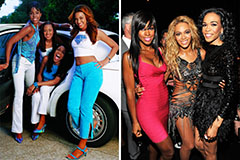Enhancing Accessibility Through Assistive Technology for the Blind
The assimilation of assistive innovation for the blind stands for a crucial advancement in access, essentially modifying just how people navigate their settings and involve with society. As we explore the varied types of assistive gadgets and their concrete effects on everyday living, it comes to be essential to check out exactly how ongoing technological innovations are improving the landscape of assistance for the blind neighborhood.
Summary of Assistive Technology
Assistive innovation refers to a range of devices and software application created to enhance the capacities of individuals with disabilities, consisting of those that are visually damaged or blind. This technology plays an essential function in promoting self-reliance and improving the high quality of life for individuals. By supplying different approaches for accessing info and carrying out daily jobs, assistive modern technology empowers individuals to browse their settings better.
The growth and execution of assistive technology embrace a variety of concepts focused on cultivating access. These principles include user-centered layout, which focuses on the demands and choices of the individual, and the integration of technology into everyday tasks. Such developments ensure that assistive devices are not just useful however likewise user-friendly and simple to make use of.
Moreover, assistive innovation incorporates a diverse spectrum of remedies, from low-tech options like magnifiers to modern advancements such as screen readers and Braille displays. The ongoing advancement of this area is driven by the demand to attend to the distinct difficulties dealt with by individuals with visual problems (Wearable technology for low vision). As innovation remains to advancement, the potential for improving availability and advertising inclusivity continues to be appealing, eventually adding to a much more equitable culture

Types of Assistive Gadgets
Numerous kinds of assistive devices are available to sustain individuals that are blind or aesthetically damaged, each designed to resolve specific demands and difficulties. These devices can be broadly classified right into three major kinds: low-tech, mid-tech, and modern solutions.
Low-tech tools include products such as magnifiers, Braille labels, and responsive maps. These are reasonably easy tools that enhance the individual's capability to connect with their environment without requiring complicated technology.
Mid-tech gadgets typically entail advanced attributes, such as electronic magnifiers and mobile Braille note-takers. These gadgets can provide capabilities like speech outcome, allowing users to gain access to details extra successfully.

Effect On Daily Living
The schedule of different assistive gadgets dramatically improves the lifestyle for individuals that are blind or visually damaged, affecting their day-to-day living in extensive ways. By integrating modern technologies such as screen viewers, Braille shows, and audio summary solutions into their regimens, users obtain greater autonomy and independence. These devices promote access to information, enabling individuals to do day-to-day tasks, such as reviewing e-mails, browsing public areas, and delighting in media content.
Furthermore, assistive tools empower people to involve more completely in social communications and area tasks. The ability to use mobile phones furnished with availability attributes enables smooth interaction and connection with others. This connection promotes a sense of belonging and reduces sensations of seclusion.
In professional settings, assistive innovation supports performance by permitting individuals to full work tasks efficiently. Tools like voice recognition software program and specialized zoom tools make it possible for customers to join the labor force on equivalent footing with their sighted peers.

Improvements in Technology
Recent technological advancements have actually dramatically go right here changed the landscape of devices readily available for people who are aesthetically impaired or blind. The combination of expert system (AI) and artificial intelligence has given rise to applications that enhance navigating and things acknowledgment. Smart device applications can currently use AI to identify and define surroundings in real-time, supplying customers with valuable contextual details.
Furthermore, innovations in haptic modern technology have brought about the development of wise canes equipped with sensing units that detect barriers and offer responsive responses. This equips customers to browse their setting with boosted confidence and self-reliance. In addition, developments in text-to-speech software application and braille displays have improved the availability of digital web content, allowing for seamless interaction with numerous media.
Wearable innovations, such as clever glasses, are also making strides in assisting visual problems. As innovation continues to develop, the possibility for also more transformative tools remains on the horizon.
Future Trends and Innovations
As technology quickly advances, the future of assistive devices for individuals that are blind holds tremendous promise. Advancements in expert system (AI) and artificial intelligence are poised to revolutionize the way blind customers engage with their settings. eye care vision center For instance, AI-driven applications are being established to boost item acknowledgment, enabling customers to determine and navigate their environments with better simplicity and accuracy.
Additionally, improvements in haptic feedback innovation are allowing the production of responsive maps and navigating help that provide real-time details through touch. These technologies not just boost wheelchair however also foster independence. Furthermore, wearable gadgets furnished with augmented fact (AR) attributes are emerging, providing users visual information with sound descriptions, thereby connecting the space in Full Article between the physical and digital globes.
In addition, the combination of smart home technology provides new opportunities for ease of access, enabling people to manage their living environments with voice commands or smart device applications. As partnership between technology designers and the blind neighborhood proceeds, the concentrate on user-centered style will certainly make sure that future technologies are tailored to fulfill the special needs of this population (Wearable technology for low vision). The trajectory of assistive innovation promises a more comprehensive and empowering future for individuals that are blind
Verdict
In final thought, assistive innovation plays a crucial duty in boosting accessibility for individuals with aesthetic impairments. Constant improvements in technology and user-centered layout guarantee that these tools cater properly to the unique needs of the blind community.
The combination of assistive modern technology for the blind represents a crucial improvement in availability, basically modifying exactly how individuals browse their settings and engage with culture.Assistive innovation refers to an array of gadgets and software made to improve the capacities of individuals with specials needs, consisting of those that are visually impaired or blind. Wearable technology for low vision.As innovation quickly proceeds, the future of assistive tools for people that are blind holds enormous guarantee. The trajectory of assistive innovation guarantees a more empowering and inclusive future for individuals who are blind
In verdict, assistive innovation plays a vital duty in boosting access for people with visual disabilities.
 Alicia Silverstone Then & Now!
Alicia Silverstone Then & Now! Destiny’s Child Then & Now!
Destiny’s Child Then & Now! Christy Canyon Then & Now!
Christy Canyon Then & Now! Pierce Brosnan Then & Now!
Pierce Brosnan Then & Now! Rossy de Palma Then & Now!
Rossy de Palma Then & Now!